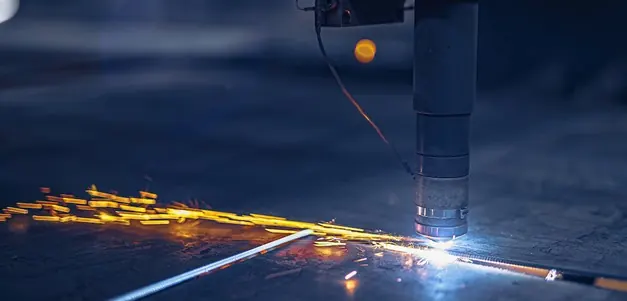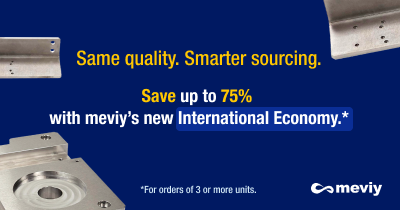BLOG » Laser Cut of Metals: Process introduction
Laser Cut of Metals: Process introduction
Laser cut is one of methods that utilizes lasers to cut metal sheets, particularly when a smooth finish is required. In this blog post, we will explain the materials and characteristics of laser cut of metals, as well as its advantages and disadvantages.
How to Process the Laser Cut of Metals
In laser cutting, the laser beam is focused using a converging lens, and the heat generated upon irradiation is used to cut the material. This method is commonly used in sheet metal processing to cut materials before bending or to create holes in metal sheets. During laser cutting, assist gas is used to blow onto the material being processed. This is because the gas protects the surface from the high heat generated during the process that might lead to the formation of an oxide film.
The gas usually used to prevent the formation of the oxide film are nitrogen or argon. Nitrogen and argon are considered inert gases that are less likely to undergo chemical reactions, even at high temperatures generated by laser irradiation. As a result, they do not react with the metal being processed, effectively preventing the formation of an oxide film. Laser cut, particularly using nitrogen, is commonly employed, and it is also known as nitrogen cutting or oxygen-free cutting. Laser cut is primarily used for processing stainless steel and titanium sheets, as well as SPCC and SPHC materials.
Let’s see below more details regarding the assist gases’ characteristics:
Nitrogen
Laser cut with nitrogen is ideal for laser processing stainless steel. Besides preventing the formation of the oxide film, it provides a glossy cut surface to the component.
When using nitrogen as assist gas, particular caution is needed in the treatment of titanium. This is because titanium will undergo nitriding, making the metal extremely hard and resistant but more difficult to process.
Argon
Similar to nitrogen, argon gas is an inert gas suitable for laser cut. It is particularly used for laser cutting titanium as this gas does not affect the processability of the material.
Advantages and Disadvantages of Laser Cut of Metals
Advantages
Improved Edge Quality: The non-reactive nature of the assist gases ensures smooth and burr-free edges, enhancing the overall quality of the cut parts. This is especially beneficial for precision components and applications requiring a high level of finishing.
Material Integrity Preservation: Since there are no chemical reactions during cutting, the material’s properties remain intact. This preserves the mechanical and structural integrity of the metal, reducing the risk of weakening or deformation.
Minimal Heat-Affected Zone: The use of nitrogen and argon helps to minimize the heat-affected zone, reducing the chances of material distortion or warping. This is particularly advantageous for sensitive materials or intricate designs.
Disadvantages
Higher Cost: Using inert gases for laser cutting comes with a higher cost compared to traditional cutting methods. The expenses include the cost of gas supply and specialized equipment, which can be a significant factor in production budgets.
Equipment Complexity: Implementing nitrogen and argon cutting requires specialized equipment and technology, adding complexity to the cutting process. Skilled operators and proper maintenance are necessary to achieve precise and efficient results.
Limited Thickness Range: Inert gas cutting may not be suitable for very thick metals. The process is more effective on thinner materials. For thicker sheets other cutting methods might be more appropriate.
Conclusion
Laser cut is a type of laser cutting that uses nitrogen or argon gas as an assist gas. It is also known as nitrogen cutting or oxygen-free cutting. With laser cutting, the heat generated prevents the formation of oxide films on the cut surface, resulting in a clean and beautiful cut without the need for additional processes like oxide film removal. This leads to advantages such as improved quality of the final piece.
On the other hand, this specific process leads to a decrease in processing speed, which is a drawback. The processing time is prolonged, and more assist gas is required. Additionally, unlike other laser cutting processes, the cost of using nitrogen or argon as the assist gas is higher.
Therefore, it is necessary to consider the balance between the cost merits from reduced processing steps when implementing clean cut.

